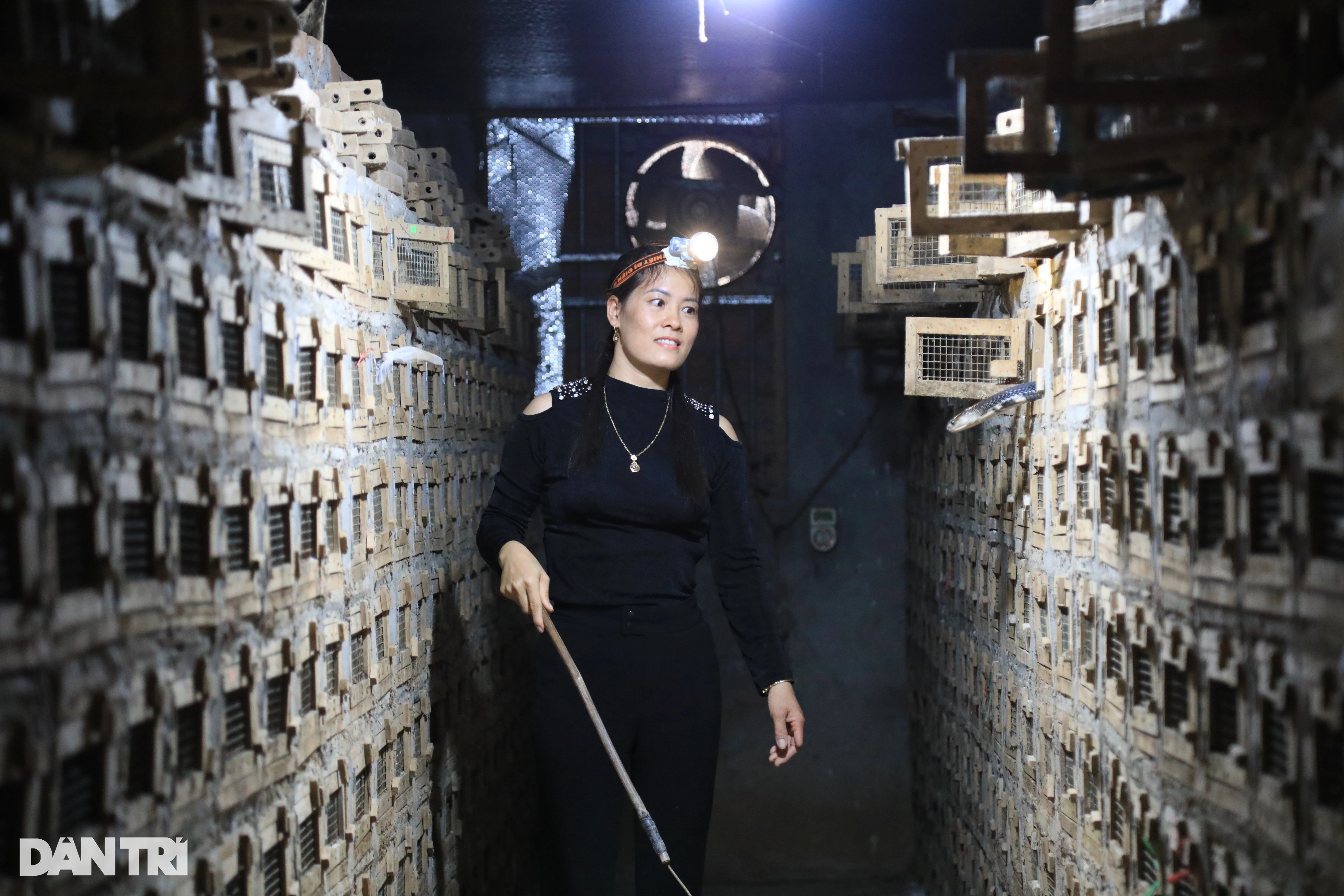
Located more than 50km from the center of Hanoi, Vinh Son commune, Vinh Tuong district, Vinh Phuc province, is famous for its cobra breeding. This is not only a traditional local occupation but also the main source of income for hundreds of households.
Mr. Pham Van Hung, 58 years old, (village 2, Vinh Son, Vinh Yen, Vinh Phuc), a person who has been involved in snake farming for more than 30 years, shared: "Raising snakes is not difficult, but you have to know how to handle them when they are aggressive or sick. Just a small mistake can be life-threatening." Currently, Mr. Hung's family raises about 300 king cobras, mainly to sell as commercial snakes and breeding snakes.
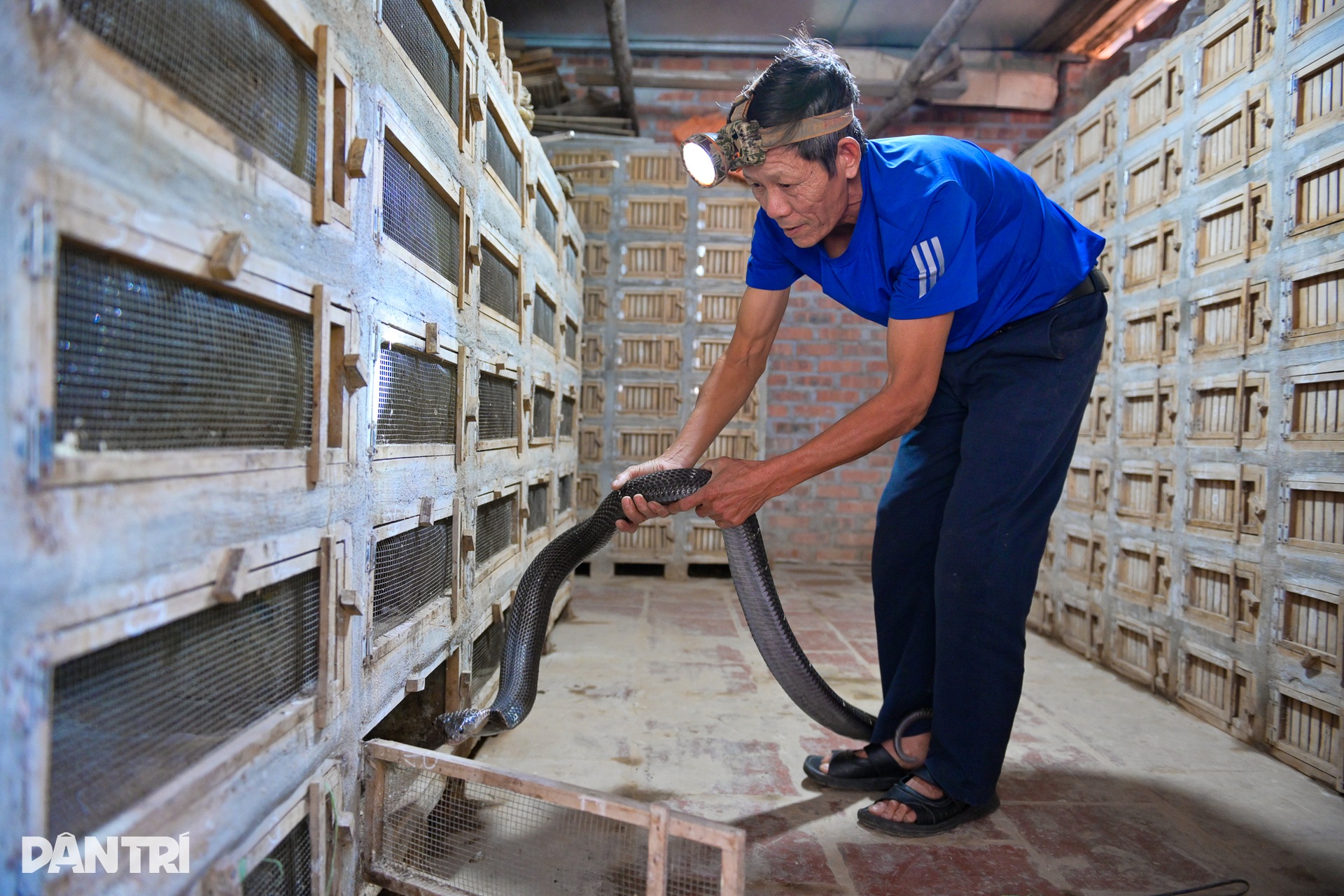 Mr. Hung's family raises about 300 king cobras (Photo: Nguyen Ngoan).
Mr. Hung's family raises about 300 king cobras (Photo: Nguyen Ngoan).
According to Mr. Hung, snake farming in Vinh Son village appeared 50-60 years ago, when agriculture was facing difficulties, people went into the forest to catch snakes for food and to sell for money.
When the natural snake resource was exhausted, they started raising snakes for breeding, thus forming the Vinh Son snake village today. "The raising and trading of snakes by Vinh Son people is carried out under the supervision and licensing of the forest ranger station," Mr. Hung added.
Currently, Vinh Son commune has more than 1,000 households raising snakes, with a scale of several hundred to thousands of snakes per household.
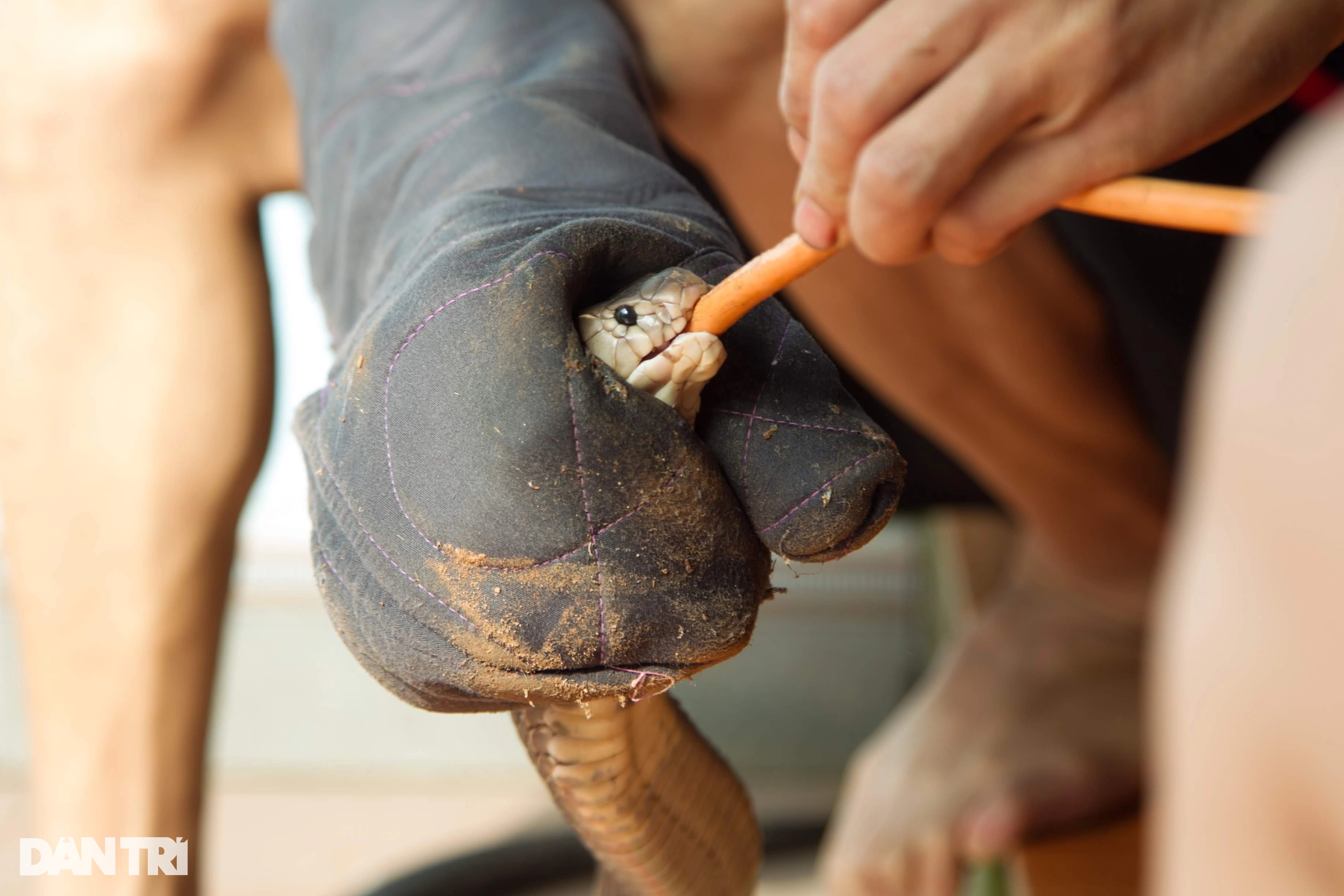 Snakes are fed every 4-5 days with chicks, ducklings, toads, or birds. When feeding, the breeder must use protective gear (Photo: Nguyen Ngoan).
Snakes are fed every 4-5 days with chicks, ducklings, toads, or birds. When feeding, the breeder must use protective gear (Photo: Nguyen Ngoan).
Although snake farming does not require a large area, the farmer must have experience and be very careful. Snake farming is not too difficult, all you need to do is feed, clean the nest and wait for the results.
The animal pens do not take up much space. The snake den is a box-shaped tunnel lined with several rows of bricks and does not need to be plastered or painted, each side is about 40cm long enough for a snake to curl up inside.
Below is a chute, above the cave door is made of wood, iron mesh and carefully locked.
Snakes are fed chicks, ducklings, toads, or birds every 4-5 days. After feeding, snakes need to be closely monitored to ensure they do not become sick or suffocate in the cage. In addition, regular cleaning of the cage is important to keep the environment clean and prevent the spread of disease.
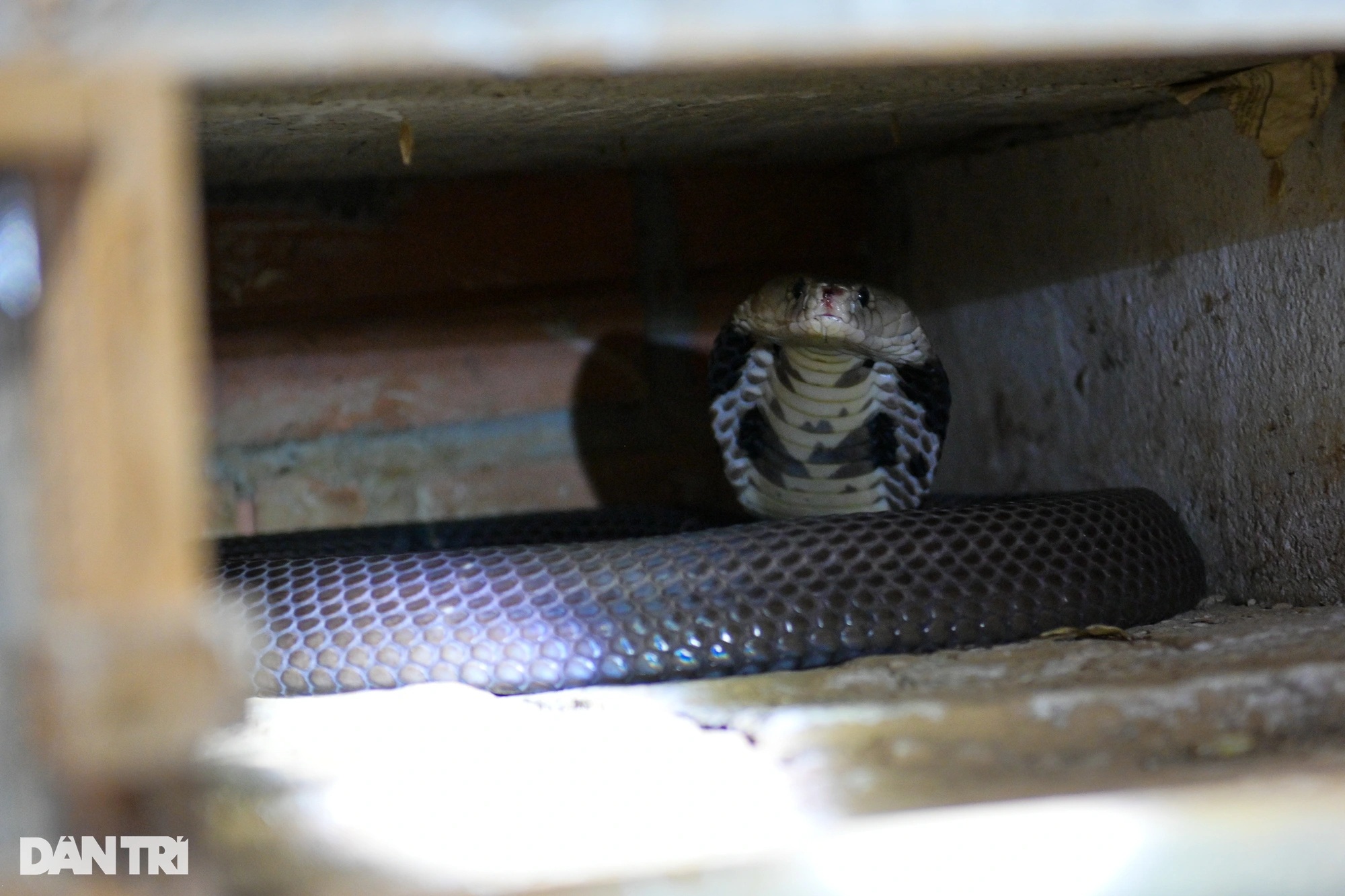 Commercial snakes cost between 500,000-700,000 VND/kg (Photo: Nguyen Ngoan).
Commercial snakes cost between 500,000-700,000 VND/kg (Photo: Nguyen Ngoan).
However, no matter how careful you are, accidents can still happen. Mr. Hung was bitten by a snake twice, resulting in partial loss of feeling in his fingers.
Although dangerous, snake farming provides a stable source of income. Commercial snakes cost between VND500,000-700,000/kg, while breeding snakes or snake eggs are sold for VND50,000-70,000/egg.
"China is the main consumer market, so the price of products depends largely on this market," said Mr. Hung.
During the Covid-19 pandemic, Mr. Hung’s family had to boil eggs and eat snake meat because there were no buyers or food for the snakes. Many times, he encountered a situation where the price of the breed was high but he could not sell it for a profit.
King cobras lay eggs once a year in the summer. Folklore holds that when cicadas chirp, snakes will mate within 15-20 days, and breeders will breed snakes at this time.
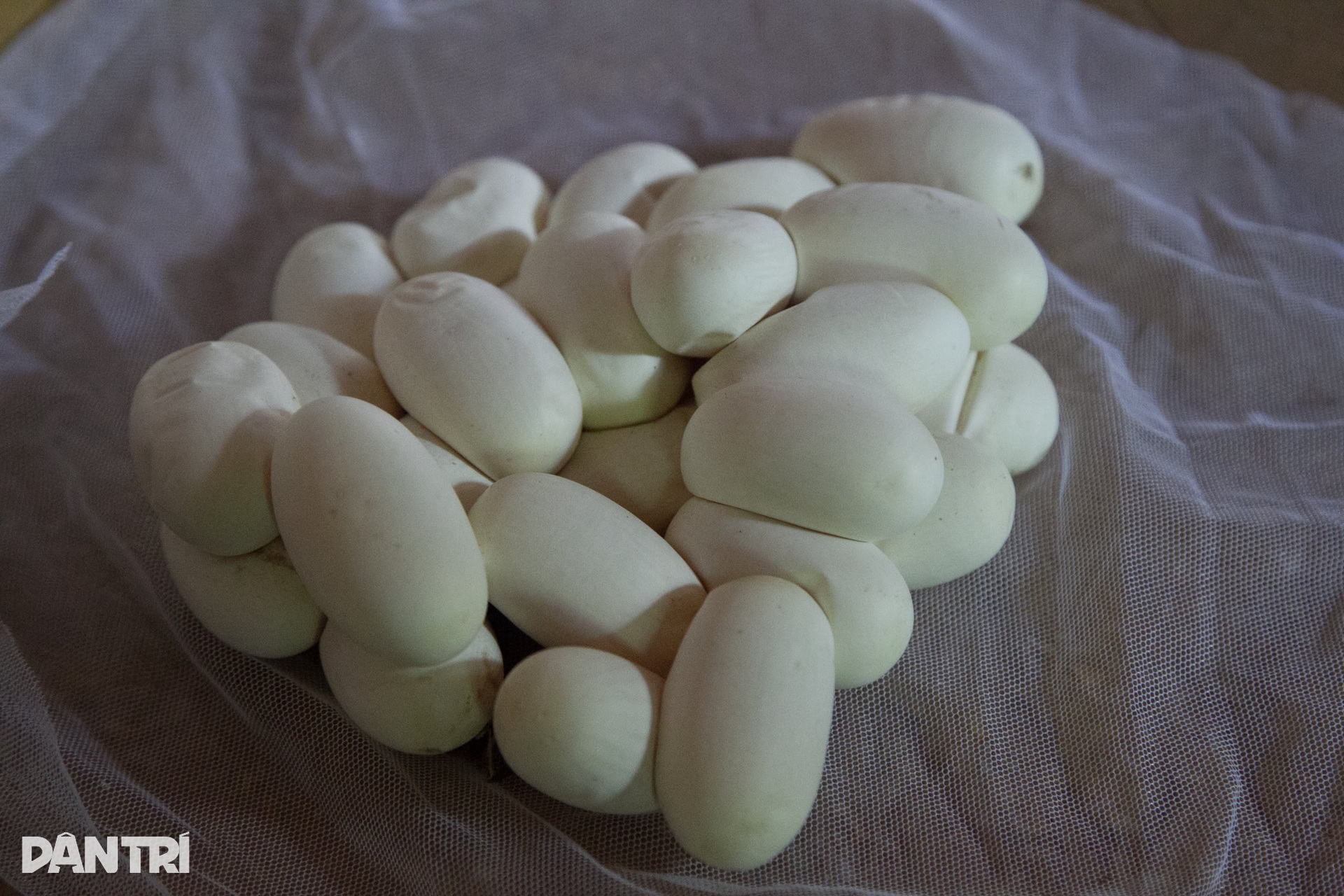 Each snake's nest contains 20-25 eggs (Photo: Nguyen Ngoan).
Each snake's nest contains 20-25 eggs (Photo: Nguyen Ngoan).
Each clutch of Mr. Hung's snakes has from 20 to 25 eggs, some large snakes give 40-50 eggs. The eggs hatch after about 60 days.
Ms. Nguyen Thi Thu, 40 years old, a large snake breeder in Vinh Son, shared that her family raises more than 2,000 snakes, including commercial snakes and breeding snakes.
Entering the breeding area, the hissing sound and the eyes of thousands of venomous snakes watching the outsiders were so scared that Ms. Thu just gently opened the cage lid and took the snakes out with her bare hands. For this woman, this was just a small matter. Her main daily job was to feed, water, and clean the cages of the snakes. Some days, she pulled out and released hundreds of venomous snakes.
"When I was little, I was scared at first, but then I got used to it. With 25 years of experience dealing with snakes, I was bitten off two of my fingers a few times," Thu said with a laugh.
She said she was still lucky compared to many people in the village, some of whom had lost arms, legs or died from cobra bites.
Despite the danger, she still sticks with the job because it is the main source of income for her family. "Every job has its difficulties, but raising snakes helps my family stabilize their lives," she said.
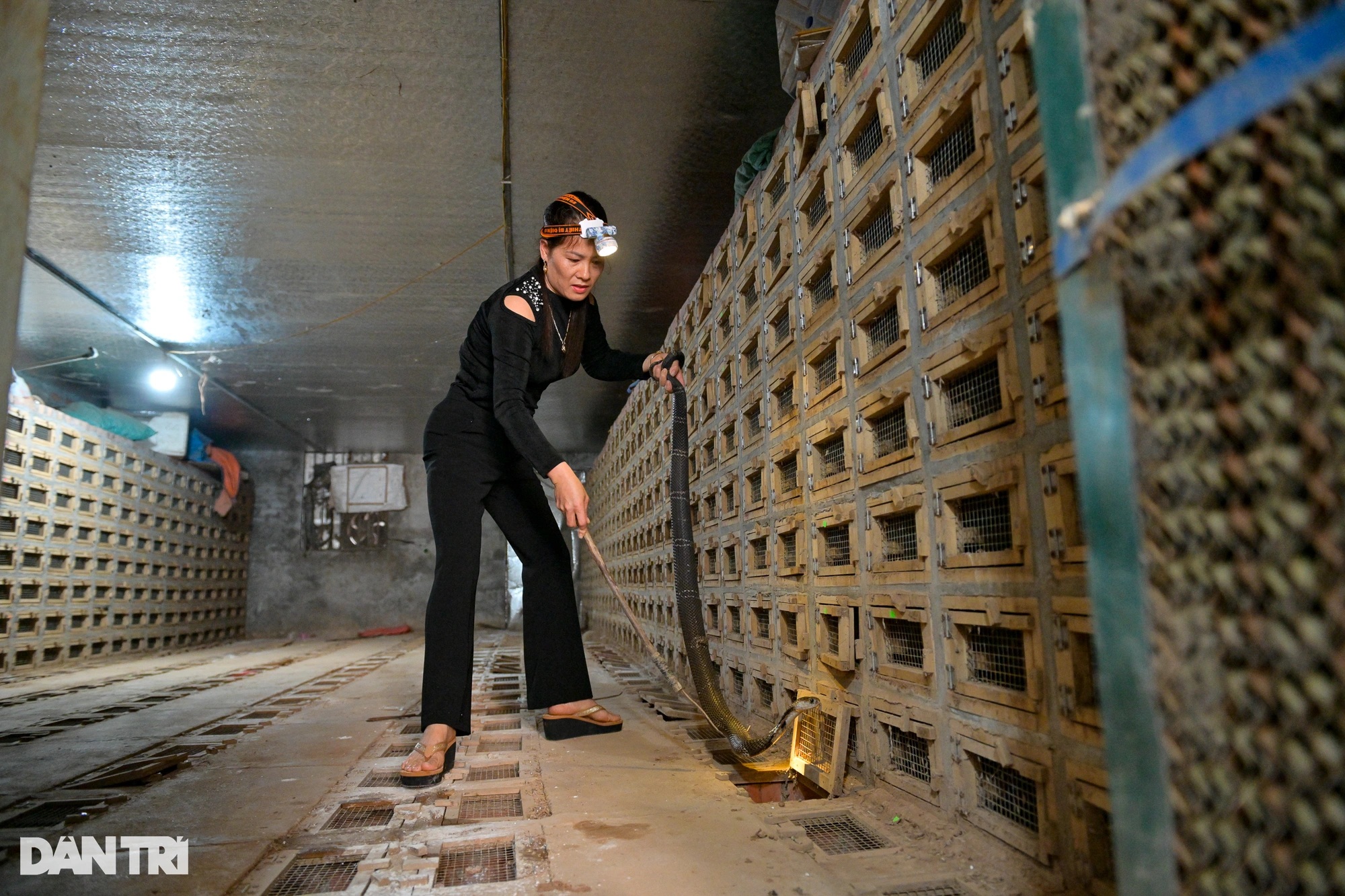 Ms. Thu said that catching venomous snakes by hand is a familiar thing for her (Photo: Nguyen Ngoan).
Ms. Thu said that catching venomous snakes by hand is a familiar thing for her (Photo: Nguyen Ngoan).
To reduce the risk, Vinh Son residents always prepare rubber bands to use as tourniquets when bitten by snakes, preventing the venom from spreading to the heart and lungs. After that, they go to the medical station to get bronchodilators, anti-allergy drugs, and take herbal medicine. Severe cases will be transferred to Bach Mai Hospital for serum transfusion.
"Ten years ago, the number of deaths due to snake bites in Vinh Son was quite high, but recently it has decreased, mainly only minor injuries," she shared.
Snake farmers also have traditional medicine recipes to help in case of emergency. The commune currently has two traditional healers who specialize in treating snake bites, helping people feel more secure in their profession.
To keep the snakes healthy, Ms. Thu regularly cleans the cage, sprays disinfectant every week or 10 days, provides water and maintains humidity to keep the environment cool. Snakes raised from a young age can be used for meat after 2 years, while breeding snakes can be raised for 5-7 years if they lay good eggs. When the snakes get old, she replaces them with new ones.
In recent years, many families in Vinh Son have invested in improving snake farming techniques and expanding their scale, building closed barns, using technology to control temperature and humidity, helping snakes grow better. Farmed snakes, like wild snakes, will hibernate. Snake farmers will stop feeding snakes around late November and early December to let the animals begin hibernation and will feed them again in spring.
Dantri.com.vn


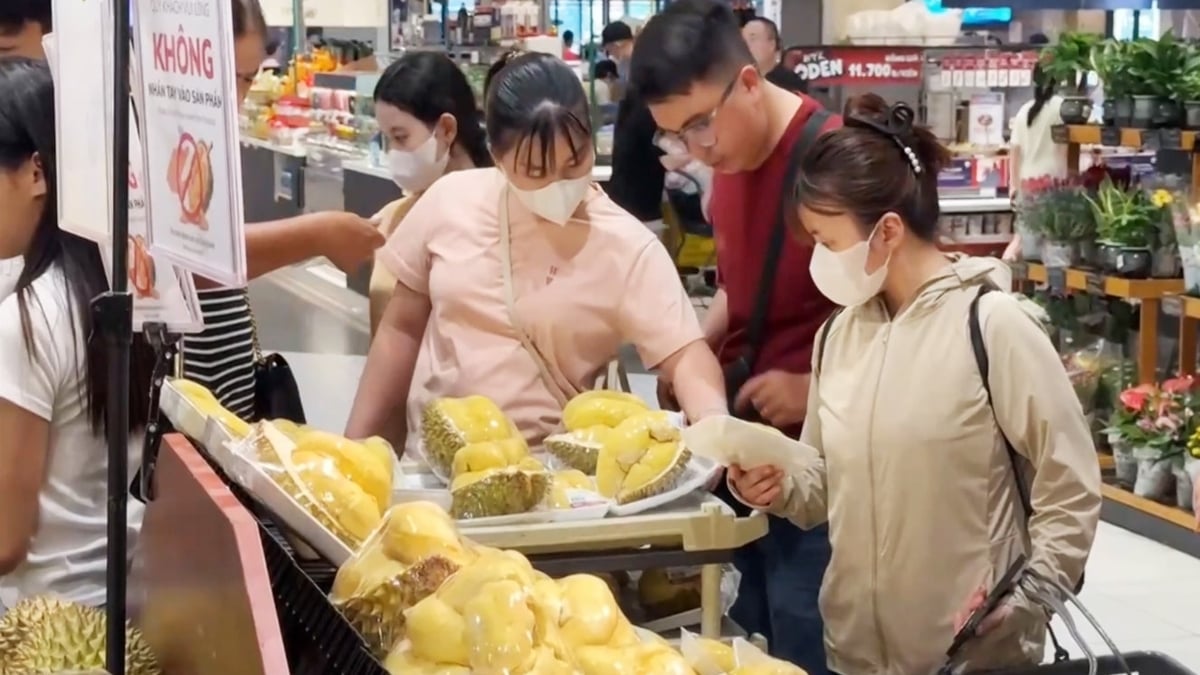
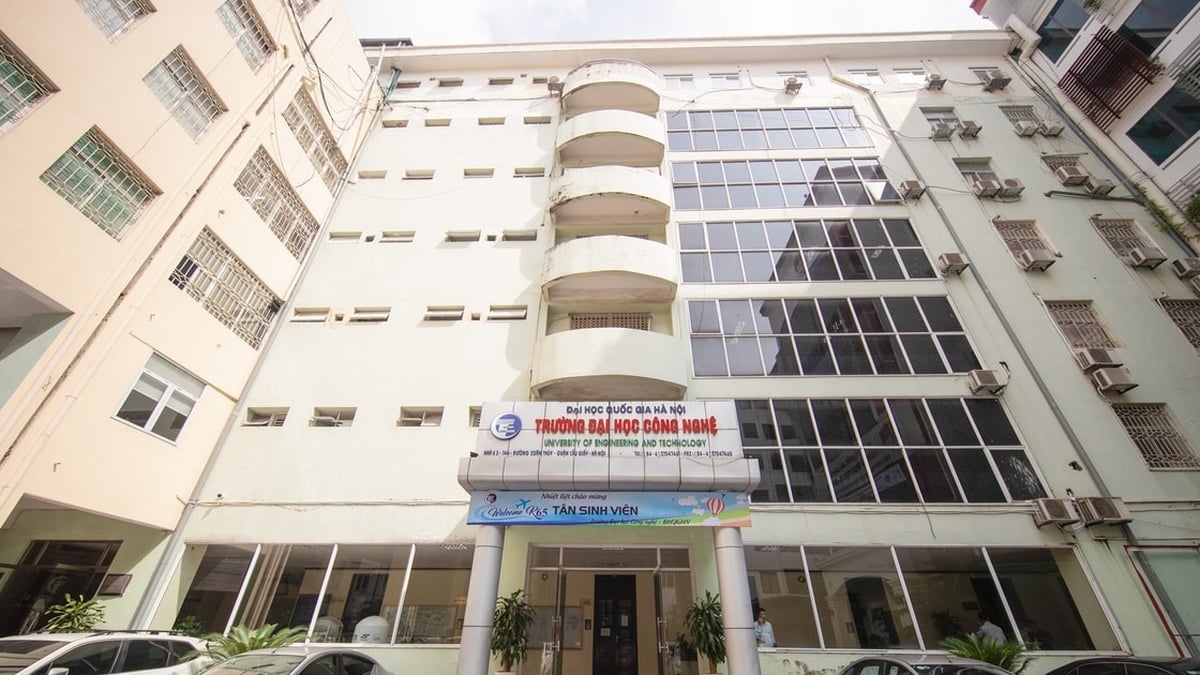


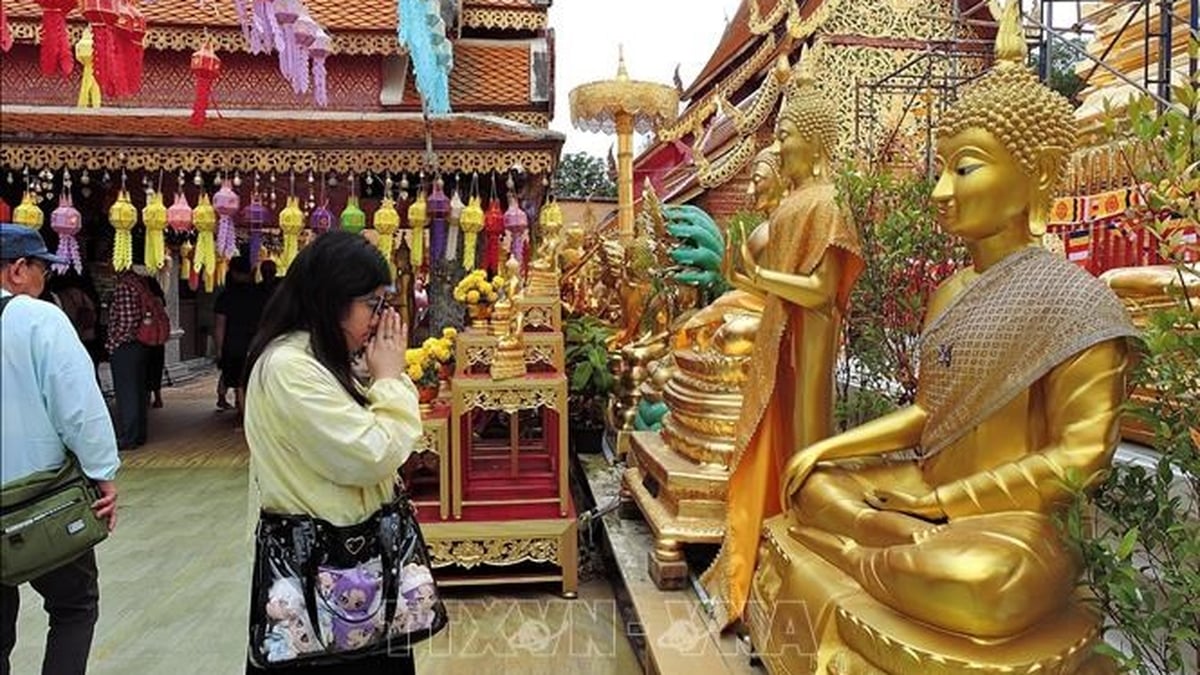

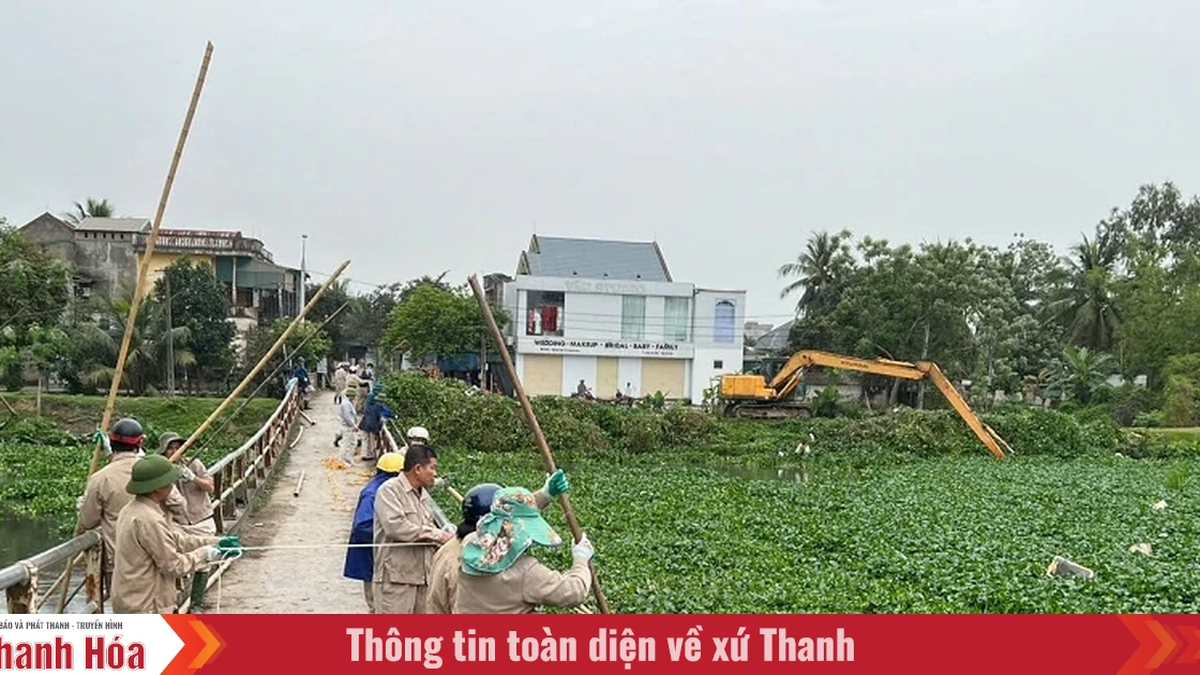
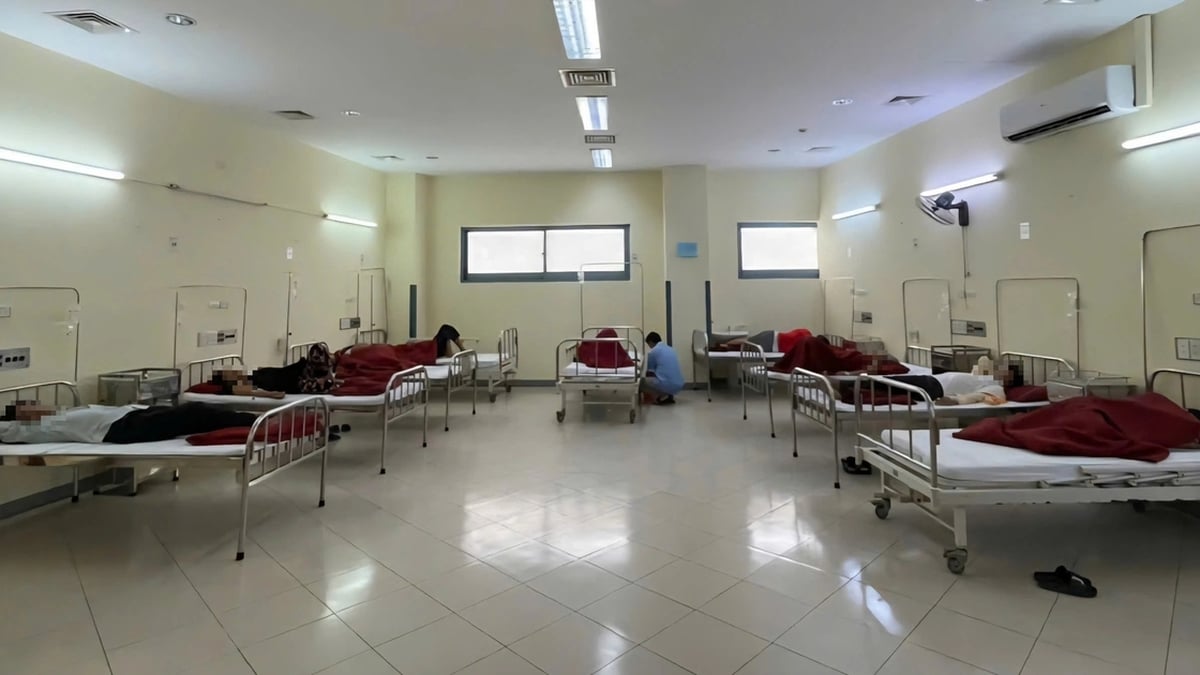















![[Photo] National Assembly Chairman Tran Thanh Man visits Vietnamese Heroic Mother Ta Thi Tran](https://vphoto.vietnam.vn/thumb/1200x675/vietnam/resource/IMAGE/2025/7/20/765c0bd057dd44ad83ab89fe0255b783)







































































Comment (0)